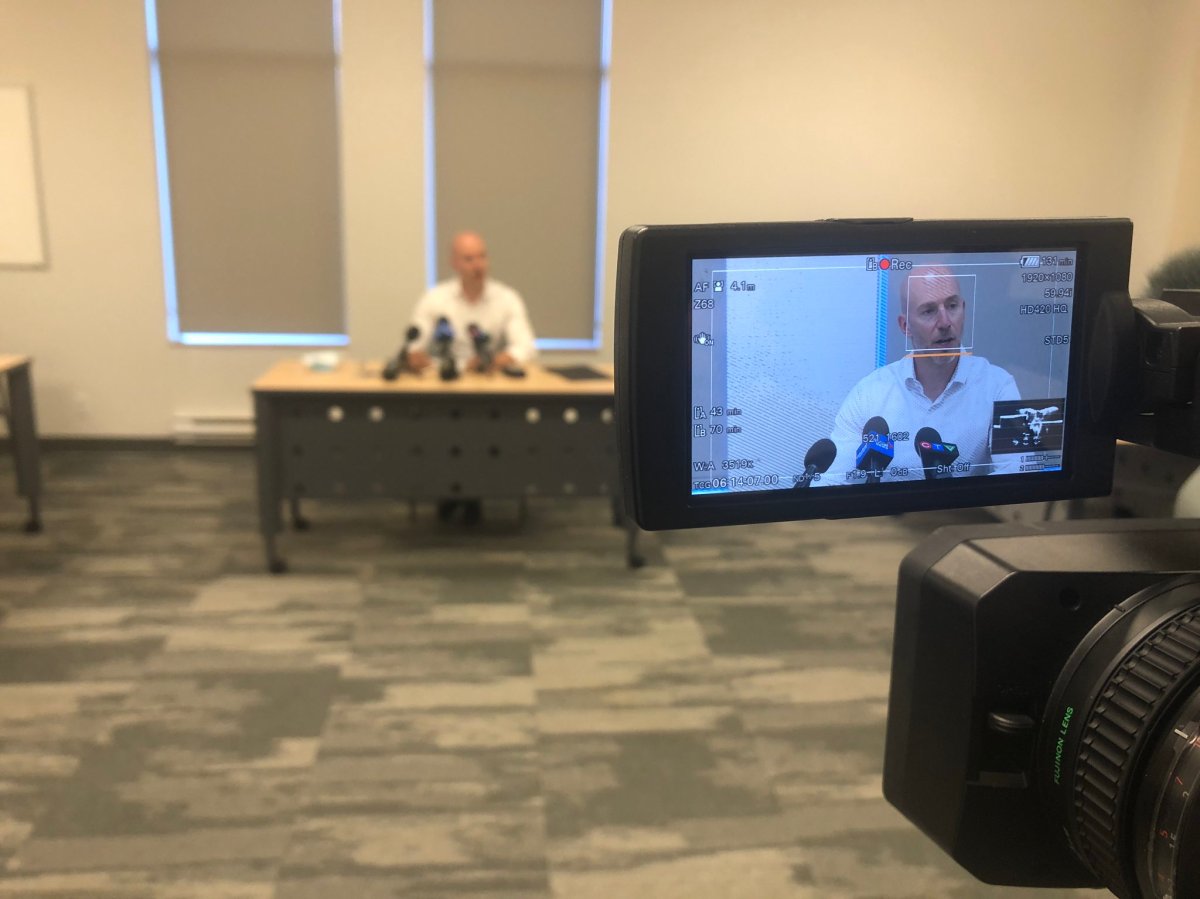The number of cases in the Legionnaires’ disease outbreak in the Moncton area remains at seven, though two are still in hospital, and one of those patients is in the intensive care unit.

“So far, most of them have been on the road to recovery, which is good news,” says Dr. Yves Léger, the east region’s medical officer of health. “We’re hopeful that the rest will as well.”
Léger says there have been no commonalities or links between the cases, aside from all patients either residing in, or having travelled in, the Moncton area.
The source of the outbreak has still not been confirmed, though Léger says he believes “a contaminated cooling tower is the most likely cause of their infection so far.”
Twenty-three cooling towers at 11 locations in the western part of the city have been tested.
“Looking at our cases’ travel patterns, coupled with wind patterns in the Greater Moncton area during their time of exposure, has led us to focus our initial efforts towards the western part of the city,” Léger says.
“This area is similar to the one targeted in 2019, however it is larger as well,” he says.
However, none of the towers tested had levels high enough to require immediate shutdown, he says.
Public Health officials are still waiting on culture testing results, which are expected to come this week, to determine if the cases have a common source.
He says while they await labs results, testing will be expanded to other parts of the city until the source is determined, he says.
- Buzz kill? Gen Z less interested in coffee than older Canadians, survey shows
- Naloxone-resistant street drug linked to 9 deaths in Eastern Canada seized in Alberta
- Bird flu risk to humans an ‘enormous concern,’ WHO says. Here’s what to know
- ‘She gets to be 10’: Ontario child’s heart donated to girl the same age
“Based on wind patterns, there are other areas of the city where contaminated cooling towers are possible, albeit less likely,” he says. “These are the areas we will focus on next.”
Testing will take place this week in the northeastern part of the city “as defined in large part by the Caledonia Industrial Park” and the downtown core.
Eighteen sites at those locations are to be checked, although it’s not clear how many cooling towers they include.
Léger says the 2019 outbreak investigation was “in some ways, very textbook,” referring to being able to quickly identify the area of city, find the source and fix the source by shutting down the contaminated towers.
It was eventually revealed the 2019 outbreak was caused by towers at Organigram, a cannabis producer in the city.
“We are certainly hopeful that we’ll have the same luck this time around but it is certainly no guarantee.”
He says wind can spread the bacteria from cooling towers “for many kilometres,” saying people might not have been physically at the possible source location.
Aside from a cooling tower registry, Léger says he recommended a “mechanism” after the 2019 outbreak to ensure companies “through legislation or other ways” properly maintained their cooling towers.
“I think that’s something that, again, will be an important element to continue to raise,” he says.
“So, it certainly is something very serious and that’s why we take it very seriously as well.”
Symptoms are similar to those of pneumonia, and can include fever, shortness of breath, new or worsening cough, headache and muscle ache.
You’re asked to seek medical attention if you have any symptoms.
— with a file from Rebecca Lau






Comments